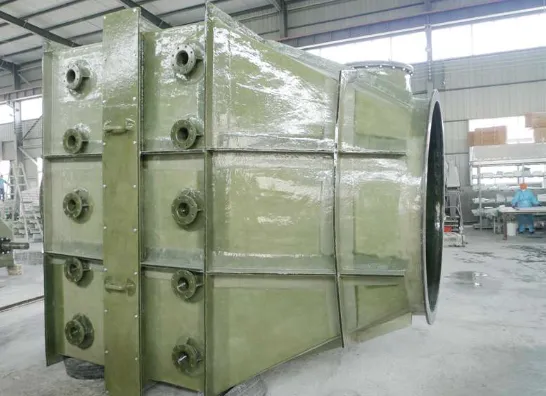
-
 Afrikaans
Afrikaans -
 Albanian
Albanian -
 Amharic
Amharic -
 Arabic
Arabic -
 Armenian
Armenian -
 Azerbaijani
Azerbaijani -
 Basque
Basque -
 Belarusian
Belarusian -
 Bengali
Bengali -
 Bosnian
Bosnian -
 Bulgarian
Bulgarian -
 Catalan
Catalan -
 Cebuano
Cebuano -
 China
China -
 China (Taiwan)
China (Taiwan) -
 Corsican
Corsican -
 Croatian
Croatian -
 Czech
Czech -
 Danish
Danish -
 Dutch
Dutch -
 English
English -
 Esperanto
Esperanto -
 Estonian
Estonian -
 Finnish
Finnish -
 French
French -
 Frisian
Frisian -
 Galician
Galician -
 Georgian
Georgian -
 German
German -
 Greek
Greek -
 Gujarati
Gujarati -
 Haitian Creole
Haitian Creole -
 hausa
hausa -
 hawaiian
hawaiian -
 Hebrew
Hebrew -
 Hindi
Hindi -
 Miao
Miao -
 Hungarian
Hungarian -
 Icelandic
Icelandic -
 igbo
igbo -
 Indonesian
Indonesian -
 irish
irish -
 Italian
Italian -
 Japanese
Japanese -
 Javanese
Javanese -
 Kannada
Kannada -
 kazakh
kazakh -
 Khmer
Khmer -
 Rwandese
Rwandese -
 Korean
Korean -
 Kurdish
Kurdish -
 Kyrgyz
Kyrgyz -
 Lao
Lao -
 Latin
Latin -
 Latvian
Latvian -
 Lithuanian
Lithuanian -
 Luxembourgish
Luxembourgish -
 Macedonian
Macedonian -
 Malgashi
Malgashi -
 Malay
Malay -
 Malayalam
Malayalam -
 Maltese
Maltese -
 Maori
Maori -
 Marathi
Marathi -
 Mongolian
Mongolian -
 Myanmar
Myanmar -
 Nepali
Nepali -
 Norwegian
Norwegian -
 Norwegian
Norwegian -
 Occitan
Occitan -
 Pashto
Pashto -
 Persian
Persian -
 Polish
Polish -
 Portuguese
Portuguese -
 Punjabi
Punjabi -
 Romanian
Romanian -
 Russian
Russian -
 Samoan
Samoan -
 Scottish Gaelic
Scottish Gaelic -
 Serbian
Serbian -
 Sesotho
Sesotho -
 Shona
Shona -
 Sindhi
Sindhi -
 Sinhala
Sinhala -
 Slovak
Slovak -
 Slovenian
Slovenian -
 Somali
Somali -
 Spanish
Spanish -
 Sundanese
Sundanese -
 Swahili
Swahili -
 Swedish
Swedish -
 Tagalog
Tagalog -
 Tajik
Tajik -
 Tamil
Tamil -
 Tatar
Tatar -
 Telugu
Telugu -
 Thai
Thai -
 Turkish
Turkish -
 Turkmen
Turkmen -
 Ukrainian
Ukrainian -
 Urdu
Urdu -
 Uighur
Uighur -
 Uzbek
Uzbek -
 Vietnamese
Vietnamese -
 Welsh
Welsh -
 Bantu
Bantu -
 Yiddish
Yiddish -
 Yoruba
Yoruba -
 Zulu
Zulu
Jan . 13, 2025 11:58
Back to list
frp handrail
Fiberglass Reinforced Plastic (FRP) handrails are revolutionizing the way industries consider safety and durability in their handrail systems. Traditionally, materials like steel and aluminum dominated the market, but with advancements in composite technology, FRP has emerged as a formidable contender with numerous advantages. Having personally overseen the installation of FRP handrails in several industrial settings, I've witnessed firsthand their transformative impact on safety and operational efficiency.
The versatility and design flexibility of FRP handrails make them ideal for a diverse range of applications. Whether in chemical plants, water treatment facilities, or public infrastructure like bridges and walkways, FRP handrails can be customized to meet specific requirements. They come in various colors and finishes, enhancing both aesthetic appeal and visibility in the workplace. Additionally, FRP handrails do not conduct electricity, making them inherently safer for environments where electrical hazards are a concern. Speaking from a place of authority based on my extensive experience, FRP handrails also excel in promoting environmental sustainability. Composed of recyclable materials, they contribute less waste to landfills compared to their metal counterparts. Moreover, the production process of FRP generates lower carbon emissions, aligning with global efforts to reduce environmental impact. Companies are increasingly prioritizing sustainability in their procurement processes, and choosing FRP handrails is a step that aligns with these green initiatives. In conclusion, the choice to implement FRP handrails in any industrial or commercial setting stems from a combination of comprehensive benefits integrated into a single solution. With reinforced safety features, cost savings, design flexibility, and sustainable attributes, FRP handrails are paving the way for modern and future-proof infrastructure projects. As industries continue to seek reliable and innovative solutions, FRP stands out as a strategic choice for forward-thinking businesses committed to safety, efficiency, and environmental stewardship. My expertise confirms that investing in FRP handrails is not just an option but a necessary evolution for industry leaders who aim to prioritize safety and sustainability.


The versatility and design flexibility of FRP handrails make them ideal for a diverse range of applications. Whether in chemical plants, water treatment facilities, or public infrastructure like bridges and walkways, FRP handrails can be customized to meet specific requirements. They come in various colors and finishes, enhancing both aesthetic appeal and visibility in the workplace. Additionally, FRP handrails do not conduct electricity, making them inherently safer for environments where electrical hazards are a concern. Speaking from a place of authority based on my extensive experience, FRP handrails also excel in promoting environmental sustainability. Composed of recyclable materials, they contribute less waste to landfills compared to their metal counterparts. Moreover, the production process of FRP generates lower carbon emissions, aligning with global efforts to reduce environmental impact. Companies are increasingly prioritizing sustainability in their procurement processes, and choosing FRP handrails is a step that aligns with these green initiatives. In conclusion, the choice to implement FRP handrails in any industrial or commercial setting stems from a combination of comprehensive benefits integrated into a single solution. With reinforced safety features, cost savings, design flexibility, and sustainable attributes, FRP handrails are paving the way for modern and future-proof infrastructure projects. As industries continue to seek reliable and innovative solutions, FRP stands out as a strategic choice for forward-thinking businesses committed to safety, efficiency, and environmental stewardship. My expertise confirms that investing in FRP handrails is not just an option but a necessary evolution for industry leaders who aim to prioritize safety and sustainability.
Next:
Related Products









